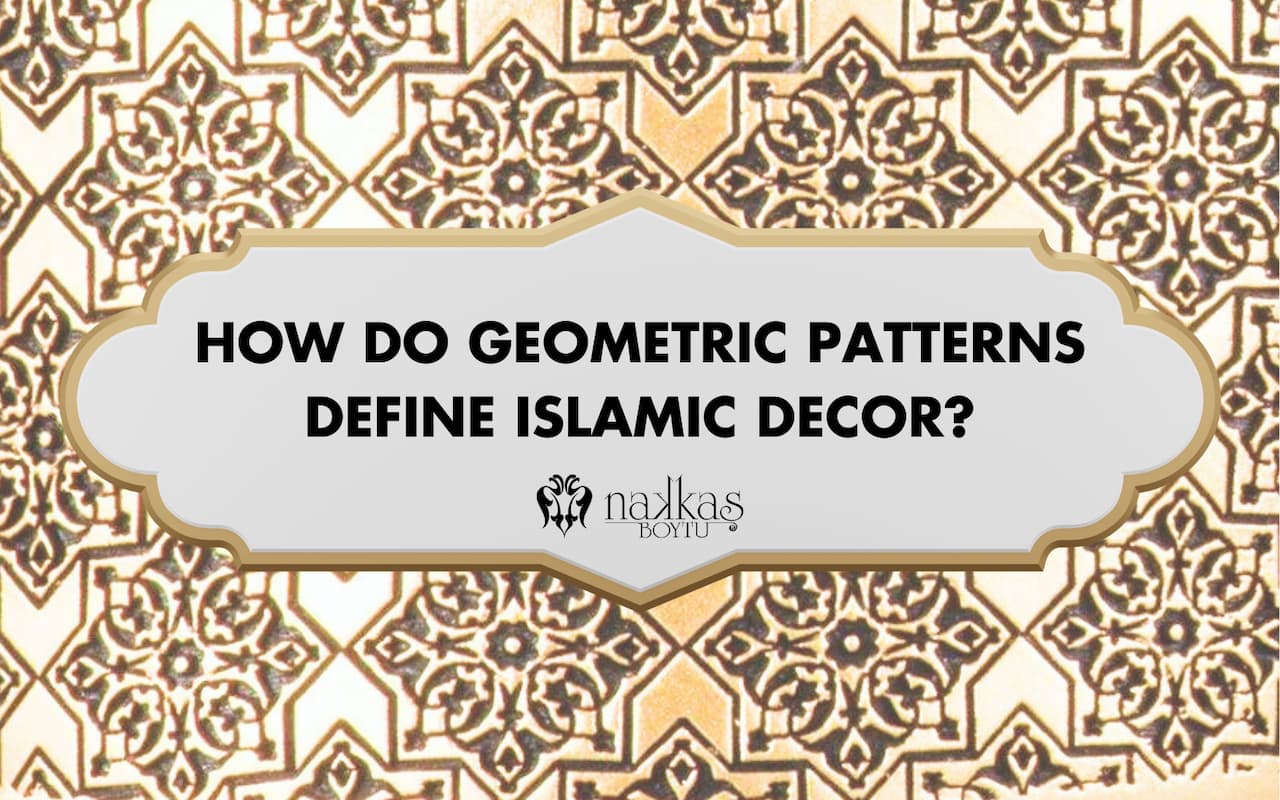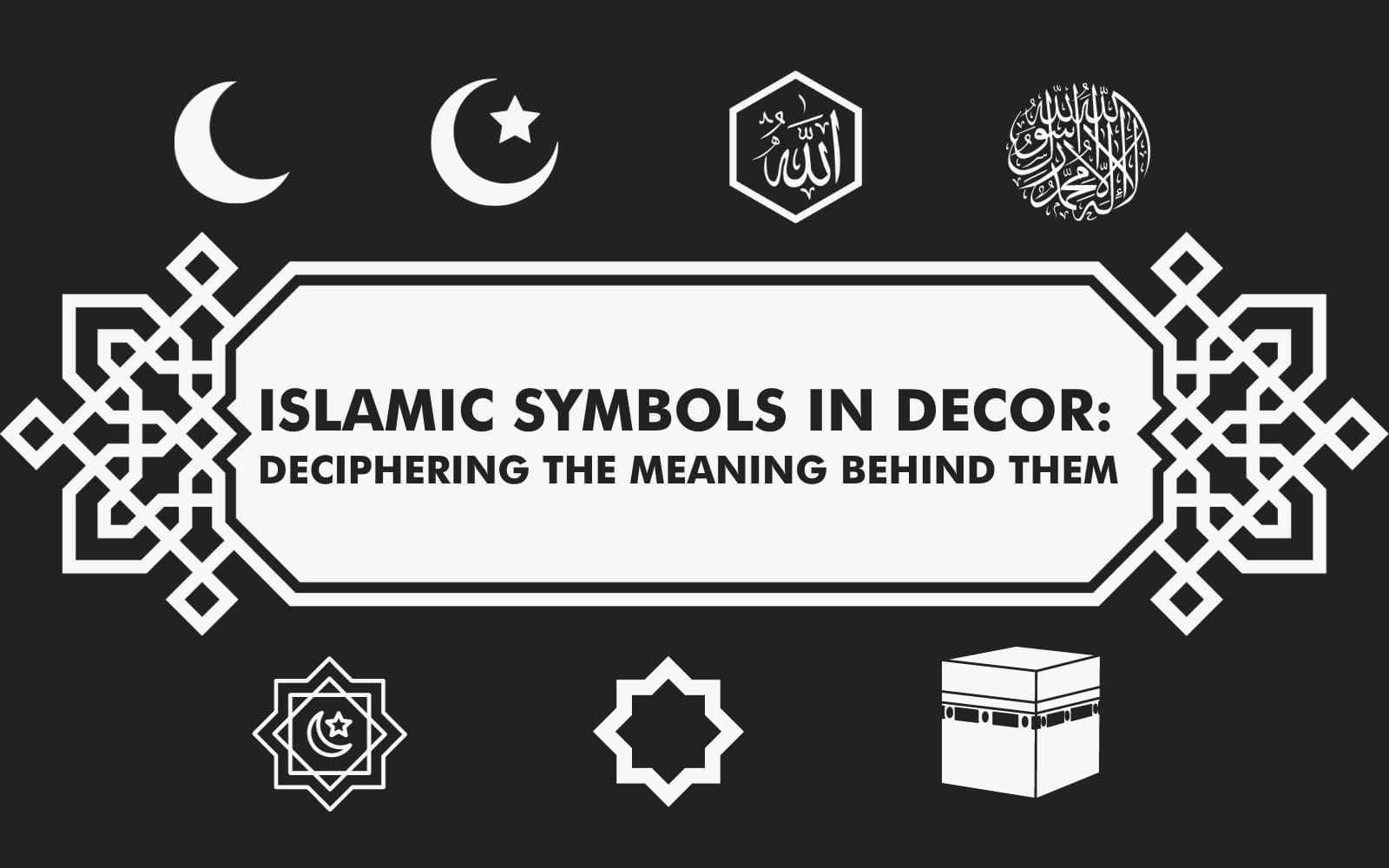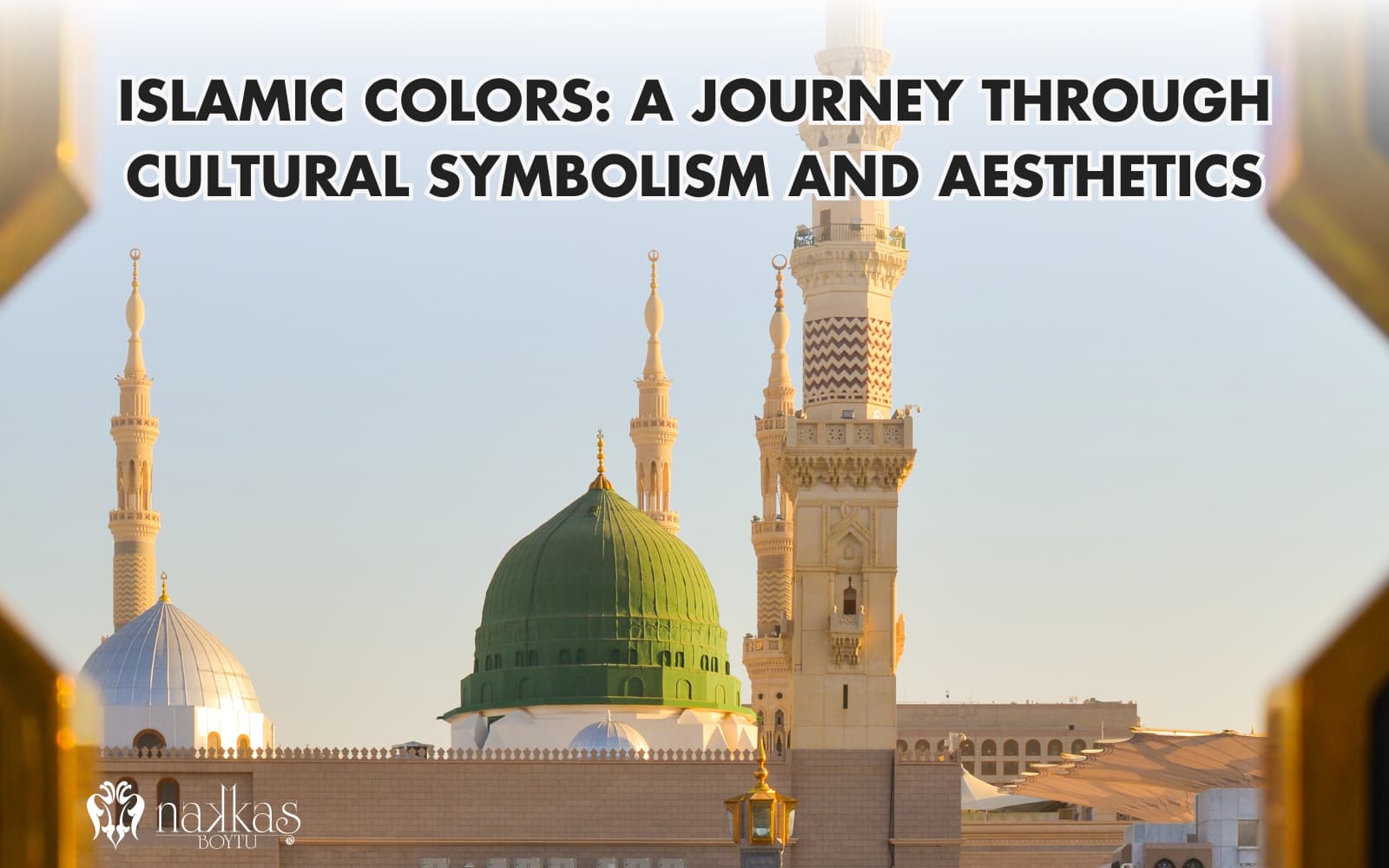At the heart of Islamic art and architecture lies the mesmerizing allure of geometric patterns, a testament to Islamic culture's rich history and profound spirituality. They carry profound meanings, reflecting core principles of Islamic philosophy and the universe's infinite nature. These intricate designs, enriched by the nuances of Islamic traditions, have adorned Islamic buildings and artifacts for over a thousand years and are found in more than 80% of Islamic artworks.
In this blog post, we will delve deeper into the world of Islamic geometric patterns, exploring their origins, significance, and modern interpretations. From the fascinating Islamic architecture of the Alhambra Palace to the intricate motifs of Persian carpets, we will uncover the stories and meanings behind these patterns. We will also discuss how these designs have transformed and influenced contemporary decor over time. Join us on a journey to explore the beauty, depth, and complexity of geometric patterns in Islamic decor.
What are Islamic Geometric Patterns?
Islamic geometric patterns are intricate designs that have been integral to Islamic art and architecture for centuries. These patterns are not mere decorations; they carry profound meanings and reflect the core principles of Islamic philosophy.
Originating from basic shapes like circles, squares, and polygons, Islamic artists combine, duplicate, and interlace these forms to craft complex designs. “Geometric Patterns in Islamic Art”, published by the Metropolitan Museum of Art, emphasizes that Islamic patterns are rooted in the classical traditions of the Greeks, Romans, and Sassanids. However, Islamic artists expanded these basic shapes to emphasize unity, order, and the infinite nature of the universe.
The lack of figurative art in Islamic spaces paved the way for the evolution of these geometric designs. The continuous, intricate designs show that even the smallest element plays a unique role in the endless repetition of the whole. This reflects Islam's belief in the unity and order of the universe, transforming ordinary structures into masterpieces of art.
Why Does Islamic Art Use Geometric Patterns?
Islamic art uses geometric patterns to convey profound beliefs, reflecting the infinite nature of the universe and the oneness of God. Deeply embedded in Islamic culture, these intricate designs serve as a medium to express deeper philosophical concepts without resorting to figurative representations. Drawing from foundational shapes like circles, squares, and polygons, these patterns symbolize unity, order, and the vast expanse of the cosmos.
According to Wikipedia's information on Islamic geometric patterns, these intricate designs are considered a means to purify the mind. Built on combinations of repeated squares and circles, the patterns evolved from simple stars in the ninth century to more complex mosaics in the sixteenth century. This evolution showcases Islamic geometric art's rich history and depth, making it a central element of Islamic cultural expression.
What are the Art forms of Islamic Geometric Patterns?
The 9 common art forms of Islamic geometric patterns:
- Ceramics
- Kilim
- Jali
- Muqarnas
- Stained Glass
- Zellij
- Metalwork
- Leather
- Girih Tilings and Woodwork

The art forms of Islamic geometric patterns encompass a rich tapestry of designs and motifs used to adorn various mediums throughout the Islamic world. These patterns, characterized by their intricate combinations of repeated squares, circles, and tessellations, can be found in a myriad of forms. These art forms, with their deep-rooted history and significance, not only serve as decorative elements but also reflect Islamic culture's mathematical and cosmological principles.
Ceramics
Ceramics in Islamic art form intricate geometric designs that perfectly complement the contours of bowls, plates, and other ceramic ware. Through ceramics, the artists seamlessly blend functionality and unique beauty.
Kilim
Kilim represents the rich textile tradition of the Islamic world. These plain-woven textiles often feature symmetrical geometric designs with stories, traditions, and deep meanings. Each patterned rug tells a tale, making it more than a decorative piece.
Jali
Jali, found in Indo-Islamic architecture, is characterized by its functional and decorative aspects. Artists meticulously carve these screens with repeating geometric patterns, allowing ventilation and light while ensuring privacy. Beyond their practicality, Jalis demonstrates Islamic artisans' craftsmanship and design skills.
Muqarnas
Muqarnas that adorn the ceilings of mosques and other Islamic buildings are layered decorative domes that showcase the depth and complexity of Islamic design. These elaborate structures staggered in a honeycomb-like pattern, enhance architectural beauty and reflect Islamic culture's mathematical and cosmological principles.
Stained Glass
Stained glass offers a blend of beauty and functionality in Islamic architecture. Found in various Islamic buildings, these geometrically patterned windows create mesmerizing visual effects by playing with light and shadow. Beyond their aesthetic appeal, they provide privacy and regulate light, reflecting the harmonious blend of art and utility in Islamic design.
Zellij Tiling
Zellij Tiling, a hallmark of Moroccan design, brings walls and floors to life with their colorful mosaic patterns. Using glazed terracotta tiles set in plaster, these patterns are intricate and vibrant. Each piece of Zellij reflects the craftsmanship, tradition, and rich artistic heritage of the Islamic world.
Metalwork
Metalwork in Islamic art showcases artists' meticulous craftsmanship and intricate designs over the centuries. From ornate jewelry to elaborate weapons and household items, the use of geometric patterns and symmetrical designs elevate the aesthetic appeal of these metalworks, making them functionally and artistically significant.
Leather
A versatile material in the Islamic world, leather often features embossed and carved designs. From intricately patterned book covers to detailed shoes and bags, leatherwork blends utility with artistry, reflecting the rich traditions and skilled craftsmanship passed down through generations.
Girih Tilings and Woodwork
Girih tilings and woodwork are a testament to Islamic artisans' mathematical precision and artistic talent. These intertwined strap patterns are found on wooden panels, doors, and furniture, emphasizing the seamless blend of geometry and art. Meticulous carvings and inlays in woodwork, combined with Girih patterns, transform ordinary wooden objects into masterpieces of design and craftsmanship.
How are Islamic Geometric Patterns Used in Islamic Decor?
Islamic geometric patterns are used in Islamic decor to adorn walls, ceilings, textiles, ceramics, and various architectural elements, infusing spaces with spiritual symbolism and aesthetic beauty. These intricate designs, derived from circles and polygons, serve as a testament to the rich artistic heritage of the Islamic world, seamlessly blending functionality with artistry. Their widespread use in decor elements reflects Islam's visual appeal and deep-rooted cultural and philosophical values.
How do you incorporate Islamic geometric patterns into your home decor?
Incorporating Islamic geometric patterns into your home decor involves integrating textiles, wall art, tiles, and decorative items adorned with these intricate designs. Rugs, cushions, or curtains with the signature geometric pattern can instantly elevate a room's ambiance. Wall hangings or tiles can serve as statement pieces, especially in kitchens or bathrooms. Additionally, lamps or pottery showcasing these patterns add a touch of elegance and cultural depth. By weaving these elements into your decor, you blend aesthetics with the rich heritage of Islamic artistry.
What are the Benefits of Using Islamic Geometric Patterns in Islamic Decor?
Islamic geometric patterns used in Islamic décor offer numerous benefits in terms of aesthetic harmony. Originating from the rich tapestry of Islamic history, the benefits of these patterns are as follows:
- Islamic geometric patterns boost the visual appeal of spaces with their intricate designs.
- These patterns encapsulate and promote profound philosophical insights and meditation.
- Using foundational shapes conveys concepts of unity, cosmic order, and infinity.
- Spaces influenced by these patterns foster feelings of peace, harmony, and balance.
- The patterns acknowledge the rich artistic and cultural heritage of the Islamic world.
- Integrating these designs connects individuals with a deep-rooted cultural legacy and symbolic significance.
- Many patterns, like those in the Alhambra Palace, demonstrate the mathematical expertise of Islamic artisans.
What are the Other Types of Islamic Art Patterns?
Here are other 7 types of Islamic art patterns:
- Arabesque Patterns
- Calligraphic Patterns
- Floral Patterns
- Interlacing Patterns
- Rosette Patterns
- Strapwork Patterns
- Squinches Patterns
Other types of Islamic art extend beyond the commonly known designs of Islamic culture. These patterns can overlap and intertwine to create complex patterns that can be combined with arabesques, floral motifs, or calligraphy. Over the centuries, these patterns have evolved from simple stars to complex mosaics and have found their way into art and architectural forms as diverse as rugs, Persian girihs, and Moroccan zellij tile work.

1. Arabesque Patterns
Arabesque patterns are characterized by the intricate intertwining of floral and natural motifs in Islamic art. Inspired by nature, they symbolize infinity and continuity. Adorning architectural elements and handicrafts, these designs reflect the fundamental principles of Islamic philosophy: unity and infinity.
2. Calligraphic Patterns
Calligraphic patterns in Islamic art display a deep respect for the written word, especially the verses of the Quran. These patterns combine elegant writing and artistic expression, making Islamic calligraphy an important art form. Beyond aesthetics, calligraphic patterns serve as a spiritual bridge, connecting viewers to the divine messages of Islam.
3. Floral Patterns
Floral patterns, intertwined with vegetal patterns in Islamic art, represent the beauty and intricacy of nature. Inspired by plants, leaves, and flowers, these patterns are more than decorative elements; they symbolize life, growth, and the divine blessings of creation. Found in art forms ranging from intricate tile work to elaborate manuscript illuminations, floral motifs are a reminder of the splendor of nature and the harmonious balance of the world.
4. Interlacing Patterns
Interlacing patterns in Islamic art captivate with their complex web of intertwined lines and shapes. These designs, often resembling woven threads or braided ropes, symbolize life's interconnectedness and the universe's intricate tapestry. Predominantly seen in architectural details, textiles, and manuscripts, these patterns weave a narrative of unity, continuity, and the cyclical nature of existence.
5. Rosette Patterns
Rosette patterns in Islamic art are characterized by their radiating symmetrical designs, resembling a stylized flower or star. Originating from ancient civilizations, these patterns found a special place in Islamic artistry, symbolizing unity, wholeness, and the cosmos. Frequently gracing architectural facades, manuscripts, and textiles, rosettes serve as both decorative elements and spiritual symbols. Their repetitive and harmonious nature reflects the cyclical patterns of life and the divine order inherent in the universe.
6. Strapwork Patterns
Strapwork patterns, while more commonly associated with European art, have also been expressed in Islamic art. These designs feature interlaced bands or straps, creating a woven or braided appearance. In Islamic contexts, strapwork often merges with geometric and floral motifs, resulting in a rich of design. Seen in architectural details, ceramics, and textiles, these patterns highlight the versatility of Islamic artisans in blending different artistic traditions, showcasing both innovation and reverence for historical motifs.
7. Squinches Patterns
Squinches patterns in Islamic art are architectural marvels that bridge the gap between flat walls and domes, allowing for a smooth transition in structures. Beyond their structural significance, squinches often feature intricate designs that merge geometric and floral motifs. The blending of form and function in shamse patterns exemplifies the holistic approach to Islamic art and architecture.
Which Islamic Decorative Tradition Uses Geometric and Floral Patterns?
Islamic decorative tradition that masterfully employs geometric and floral patterns is the arabesque. This unique style, deeply embedded in Islamic culture, creates harmonious designs that resonate with mathematical precision and nature's elegance. Representing infinity and continuity, this tradition encapsulates the essence of Islamic aesthetics.
What are Modern Interpretations Using Islamic Geometric Patterns in Decoration?
Modern interpretations using Islamic geometric patterns in decoration primarily involve the integration of traditional motifs into contemporary art, architecture, and design. These modern Islamic geometric patterns adapt the timeless beauty of historical designs to fit today's aesthetic and functional needs. As the design world evolves, these patterns find their way into modern homes, fashion, and digital platforms, offering a blend of heritage and innovation.

Inspired by the rich texture of Islamic design? With its deep-rooted tradition and innovative approach, Nakkaş Boytu brings these intricate patterns to life in a three-dimensional world. Embrace the beauty and depth of Islamic art with Nakkaş Boytu's unique products. Discover and enrich your space with Nakkaş Boytu today.




